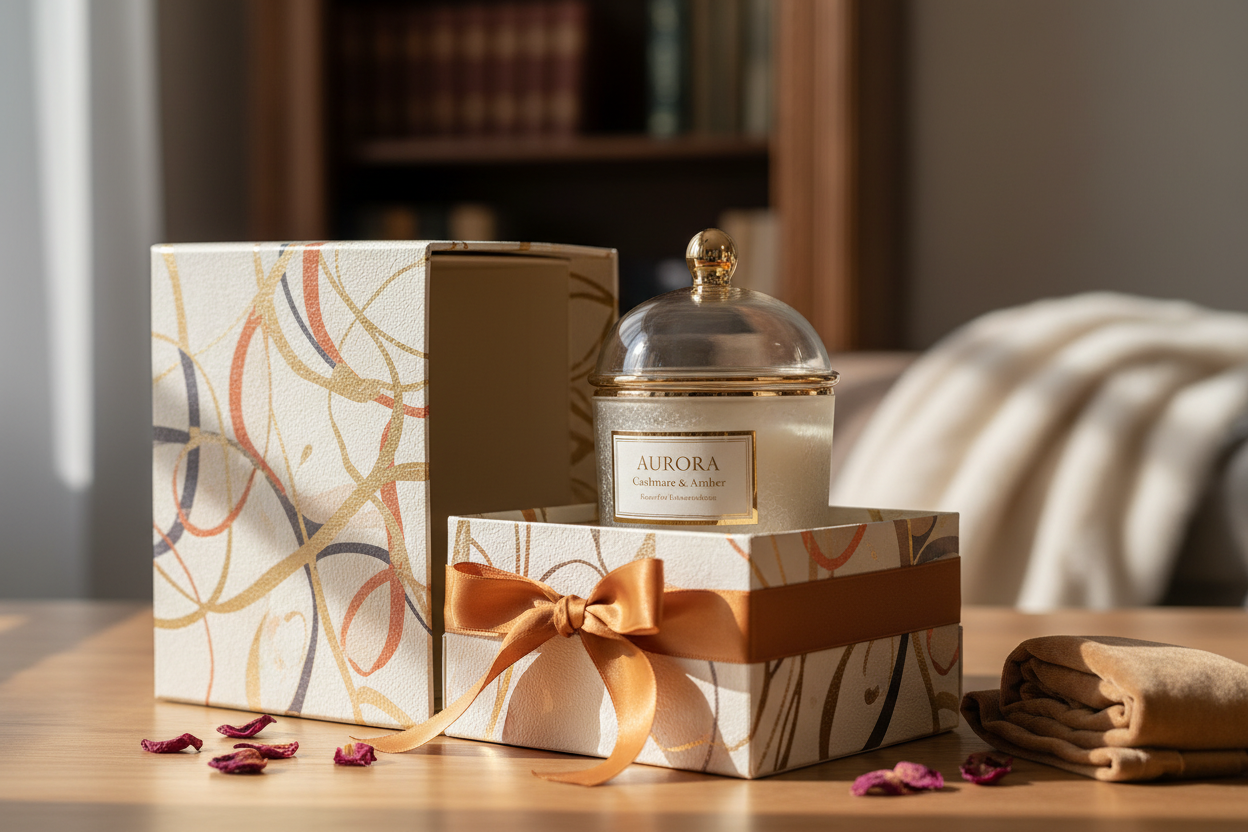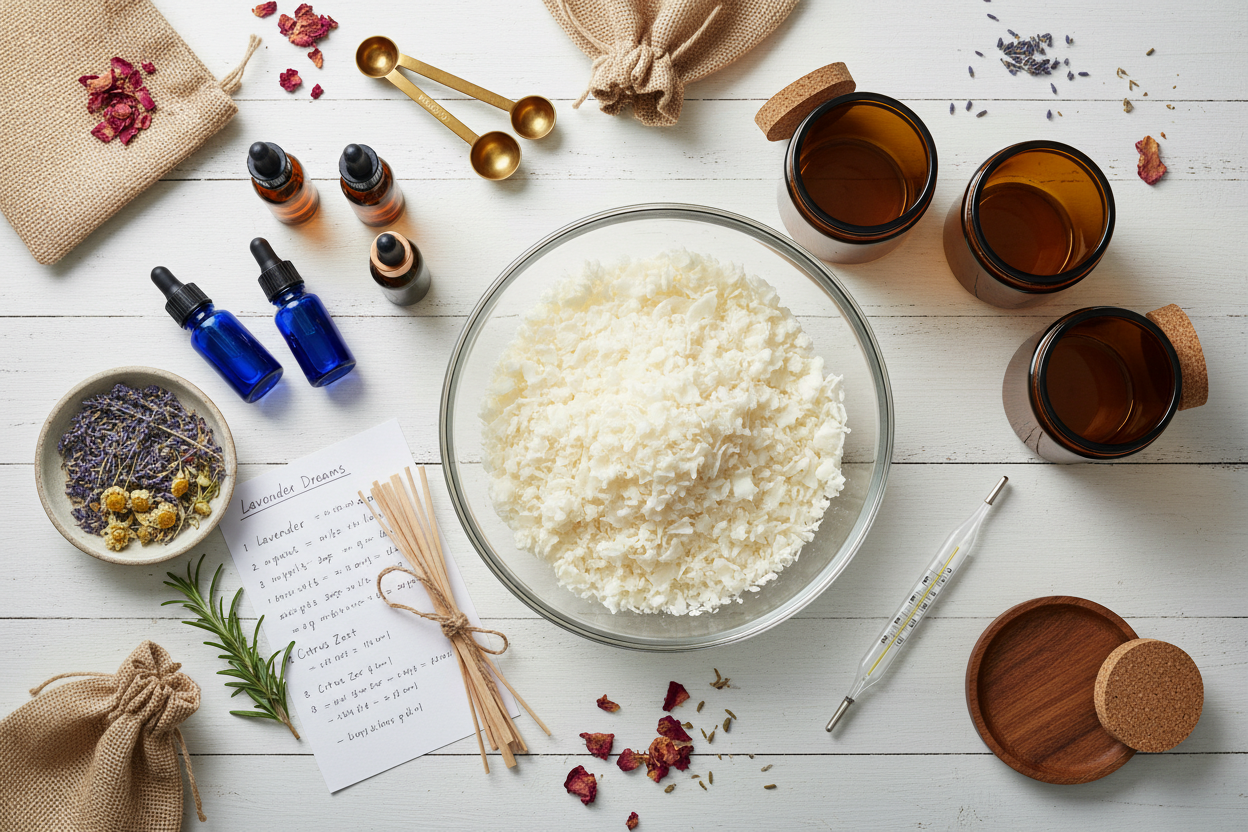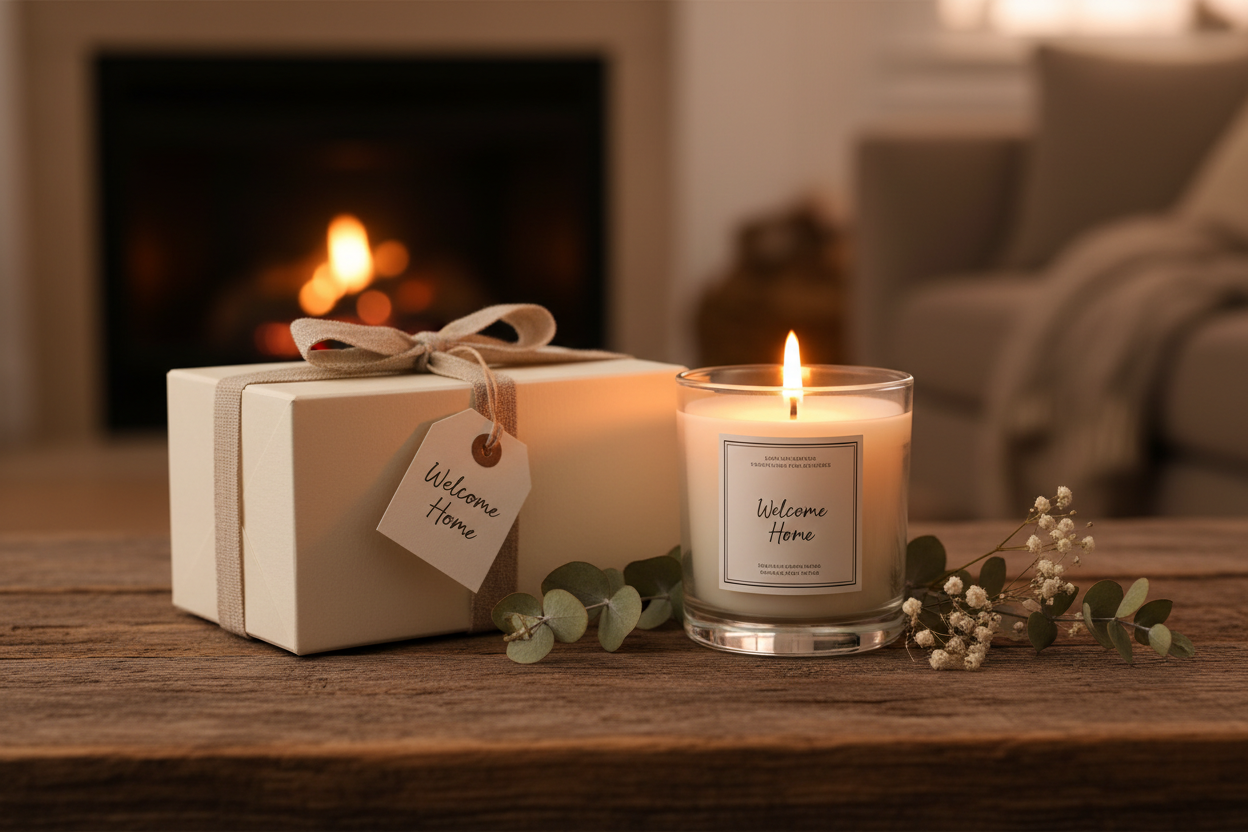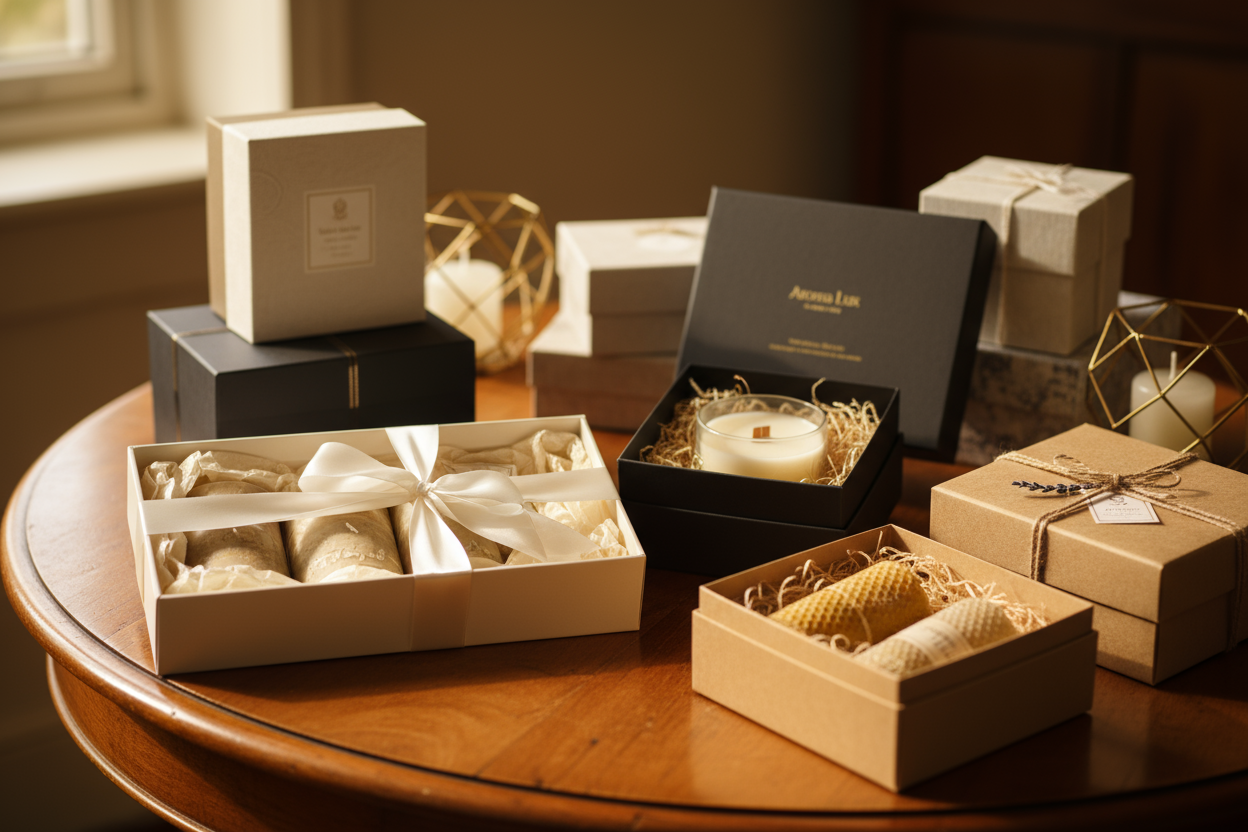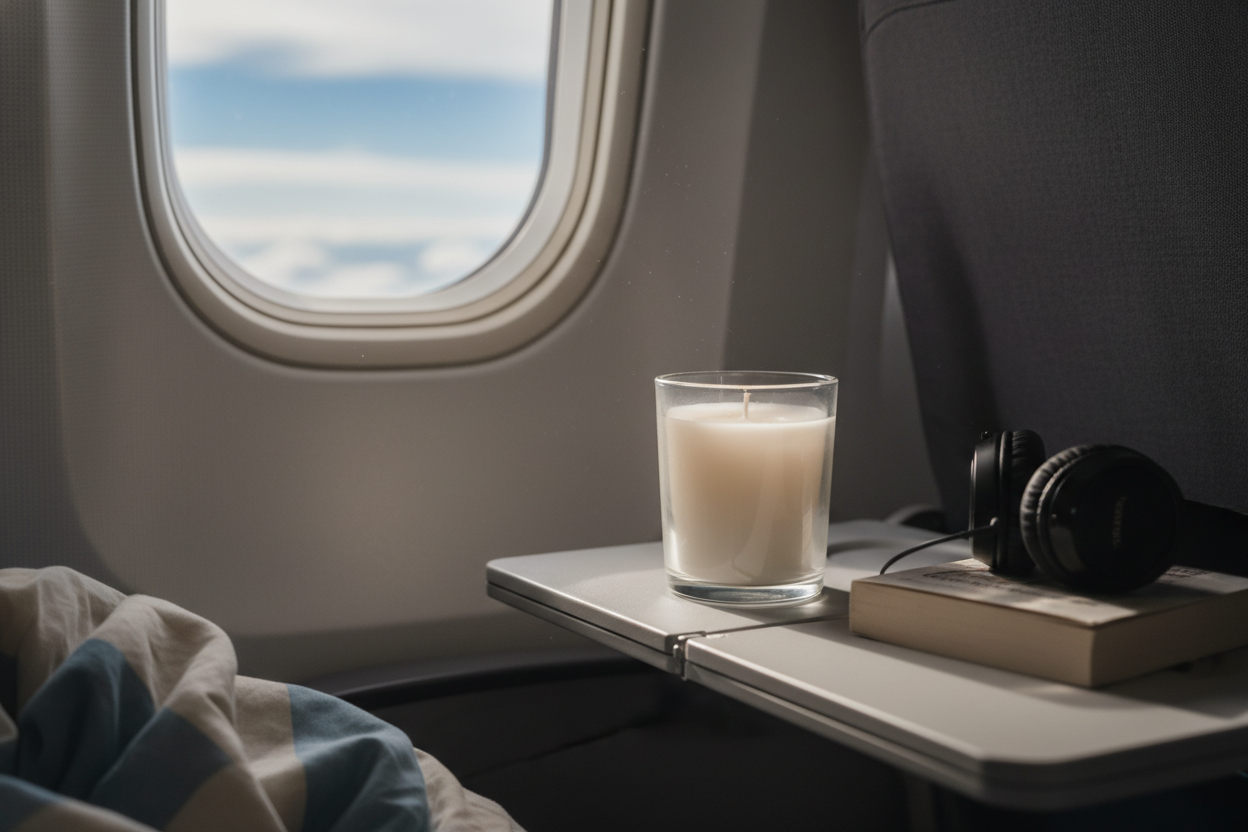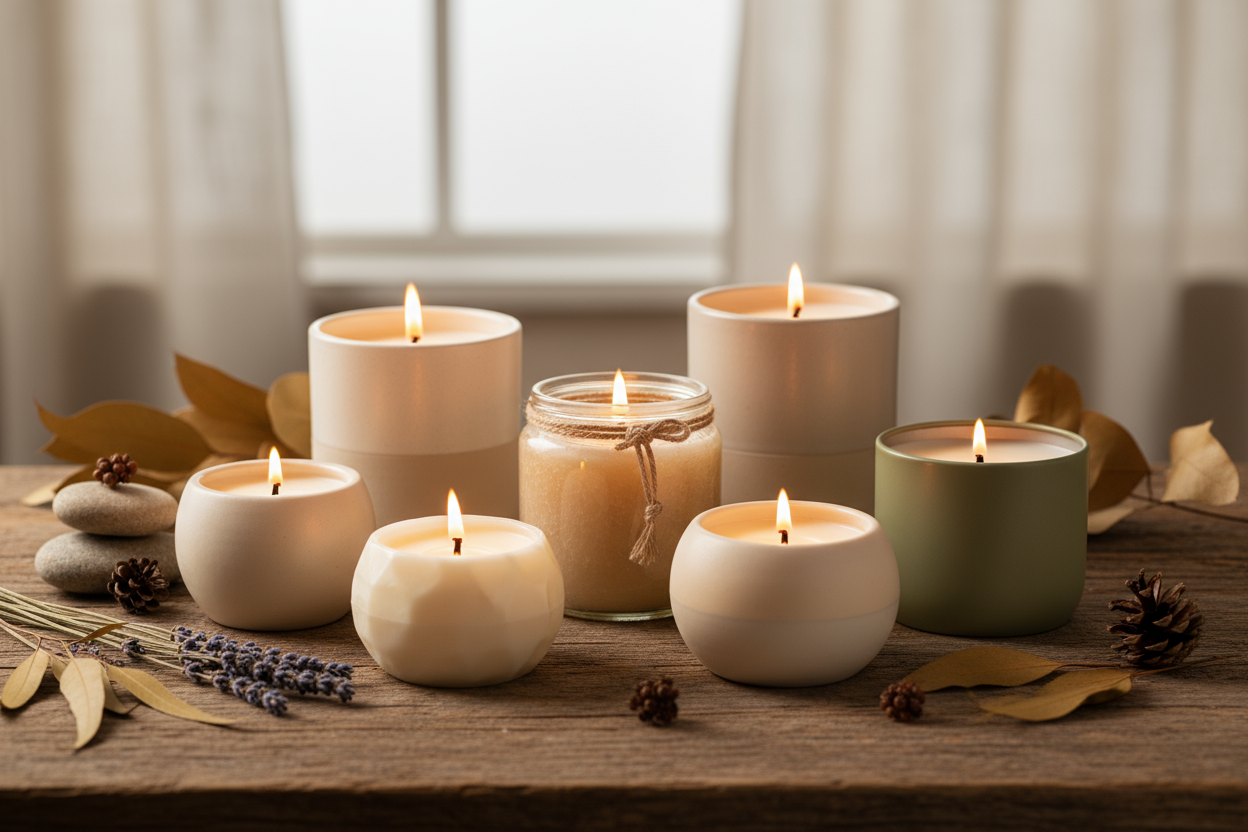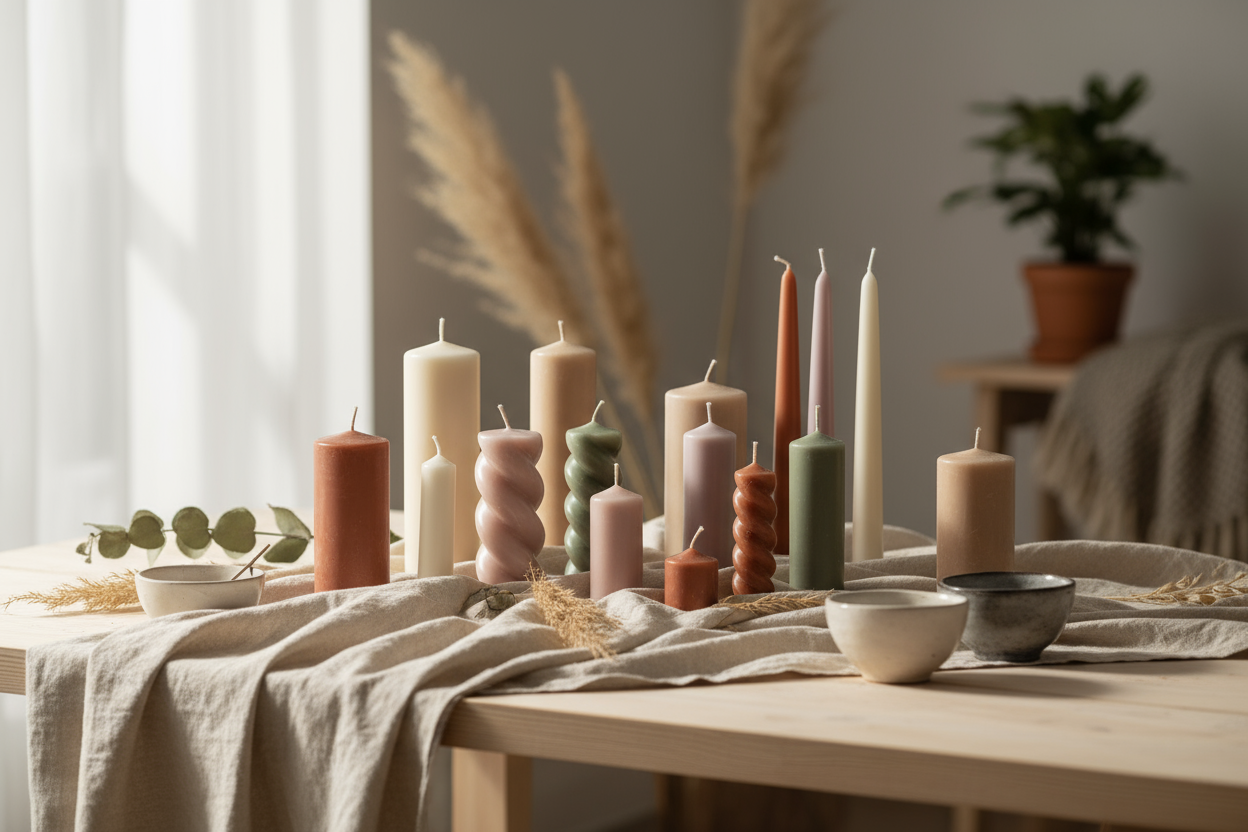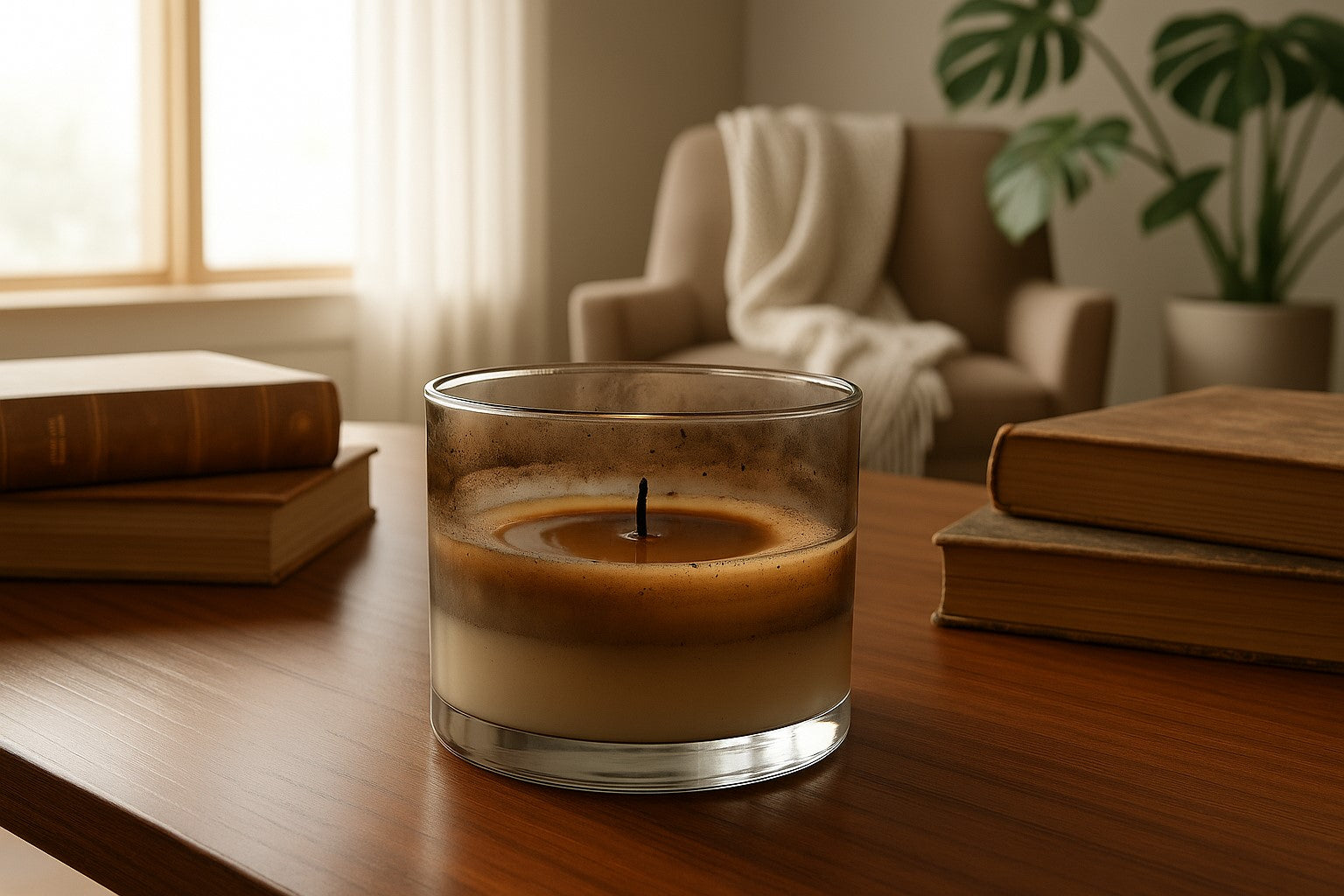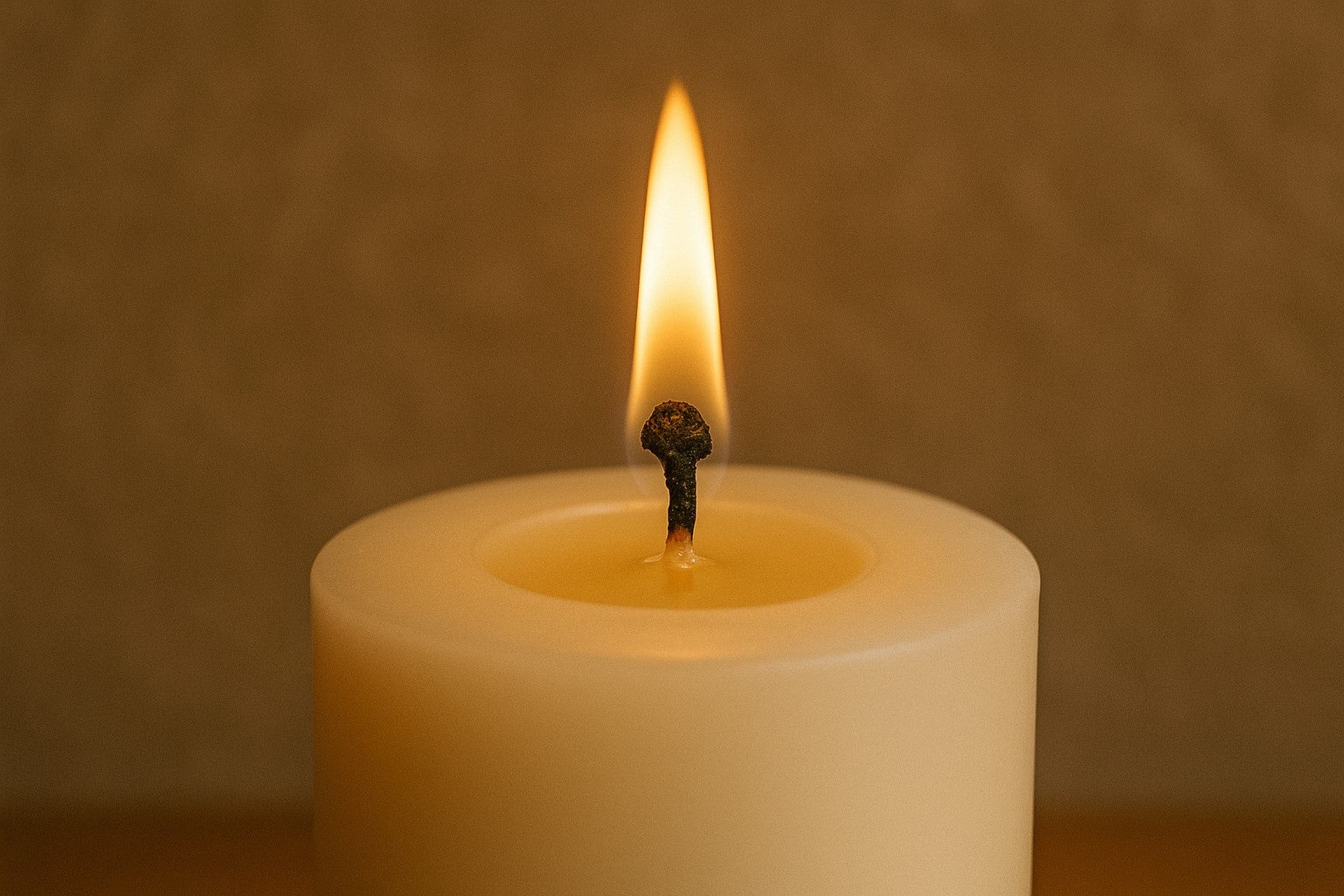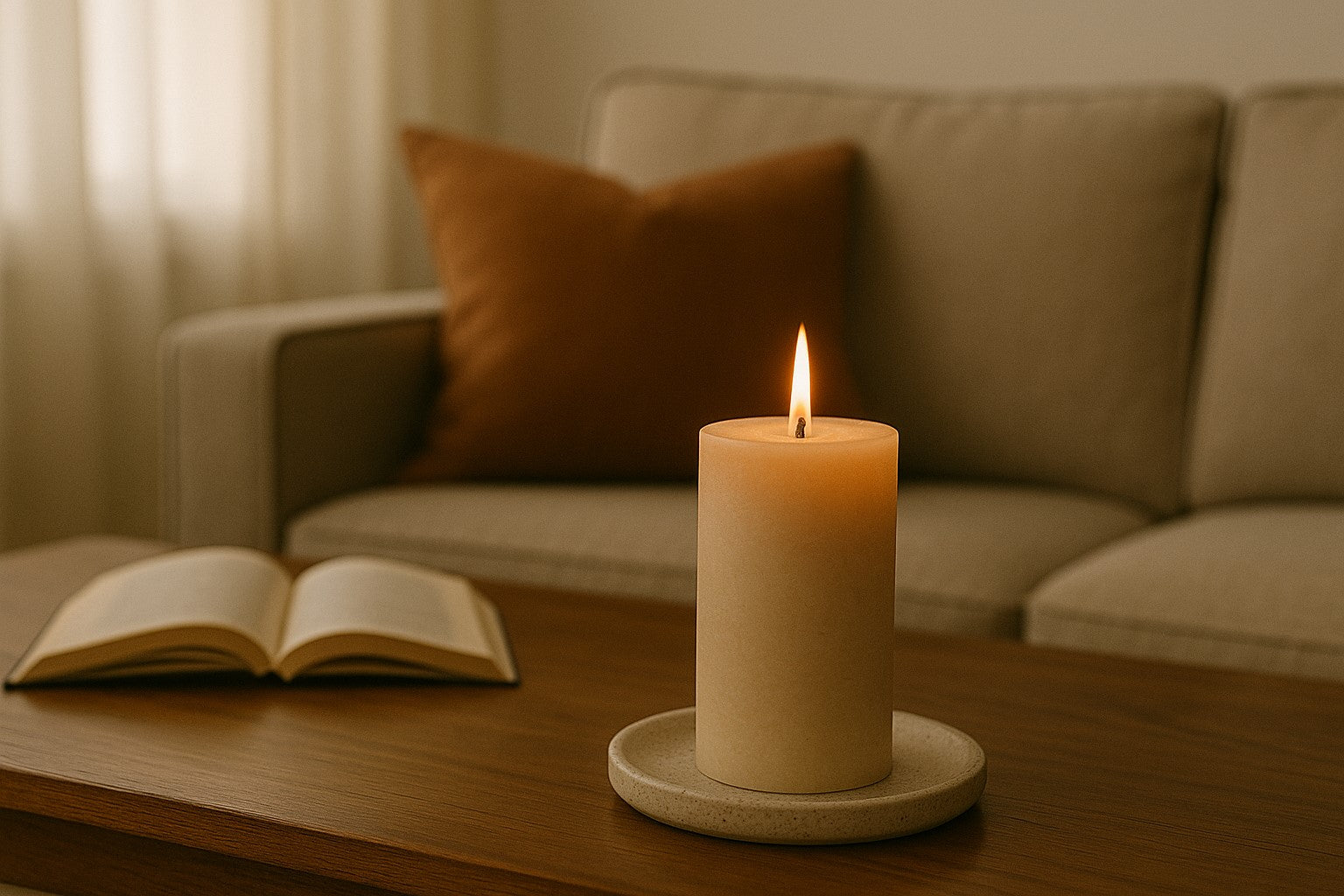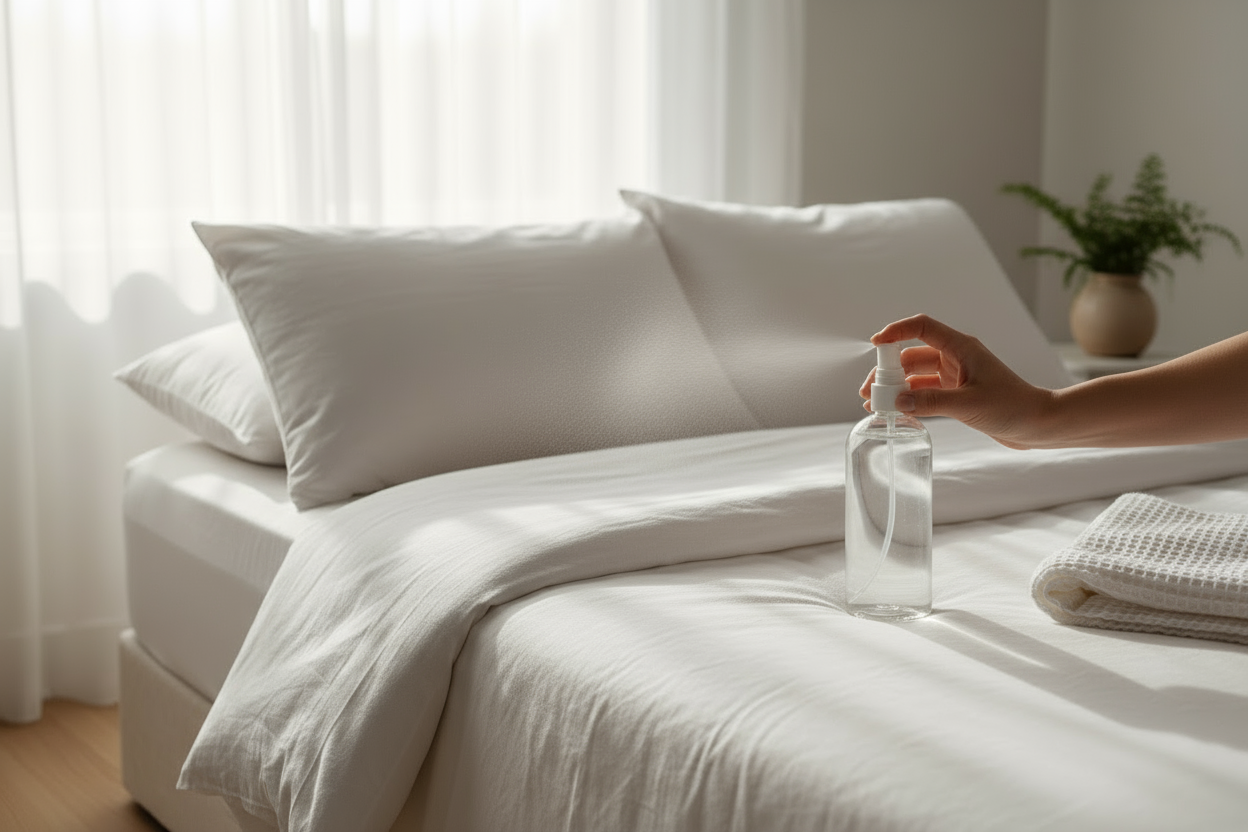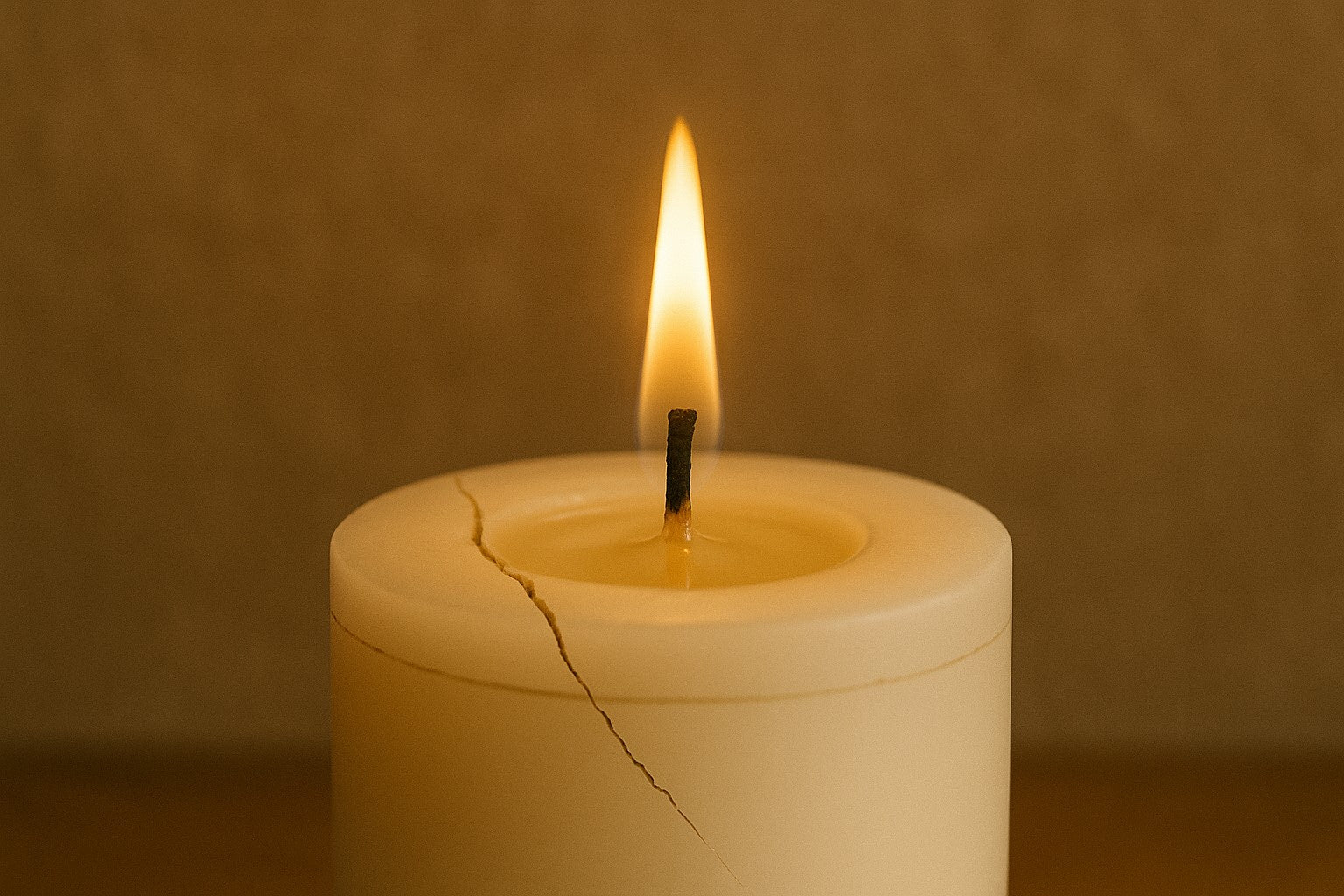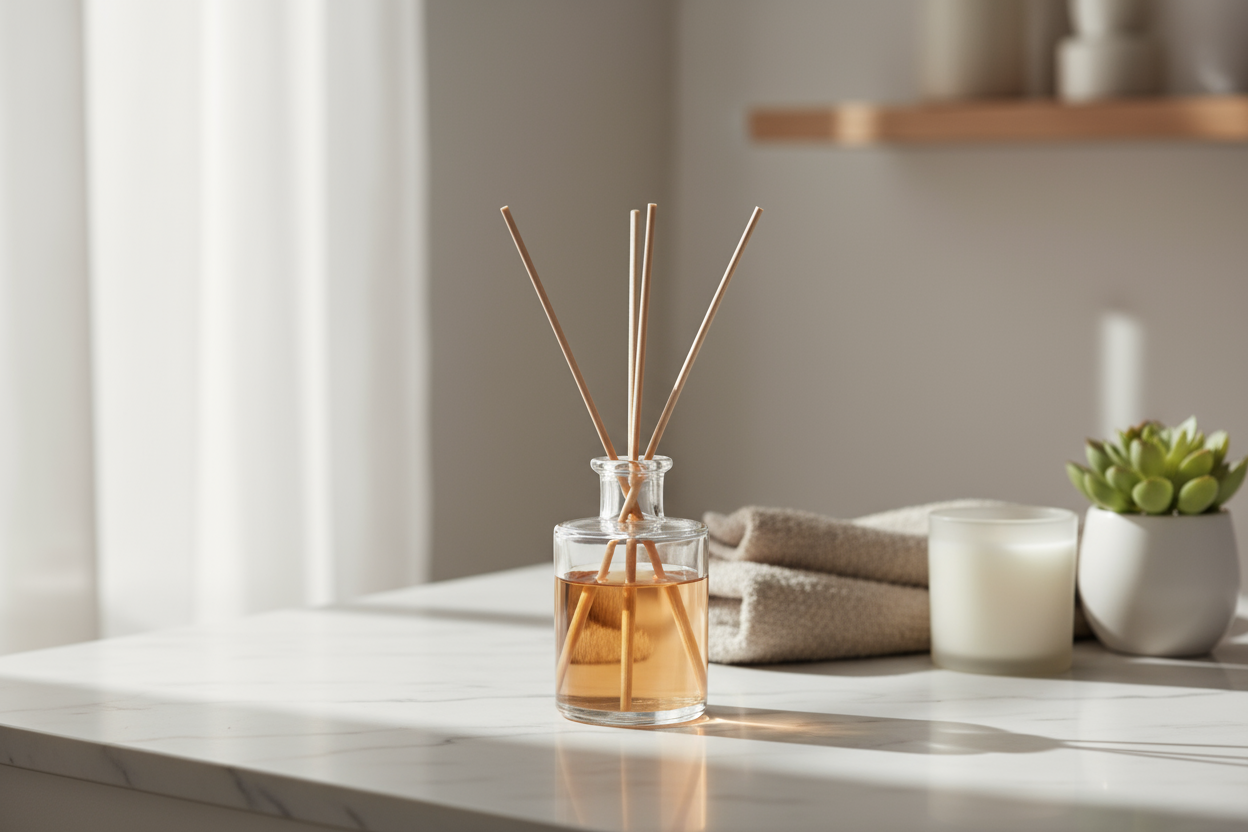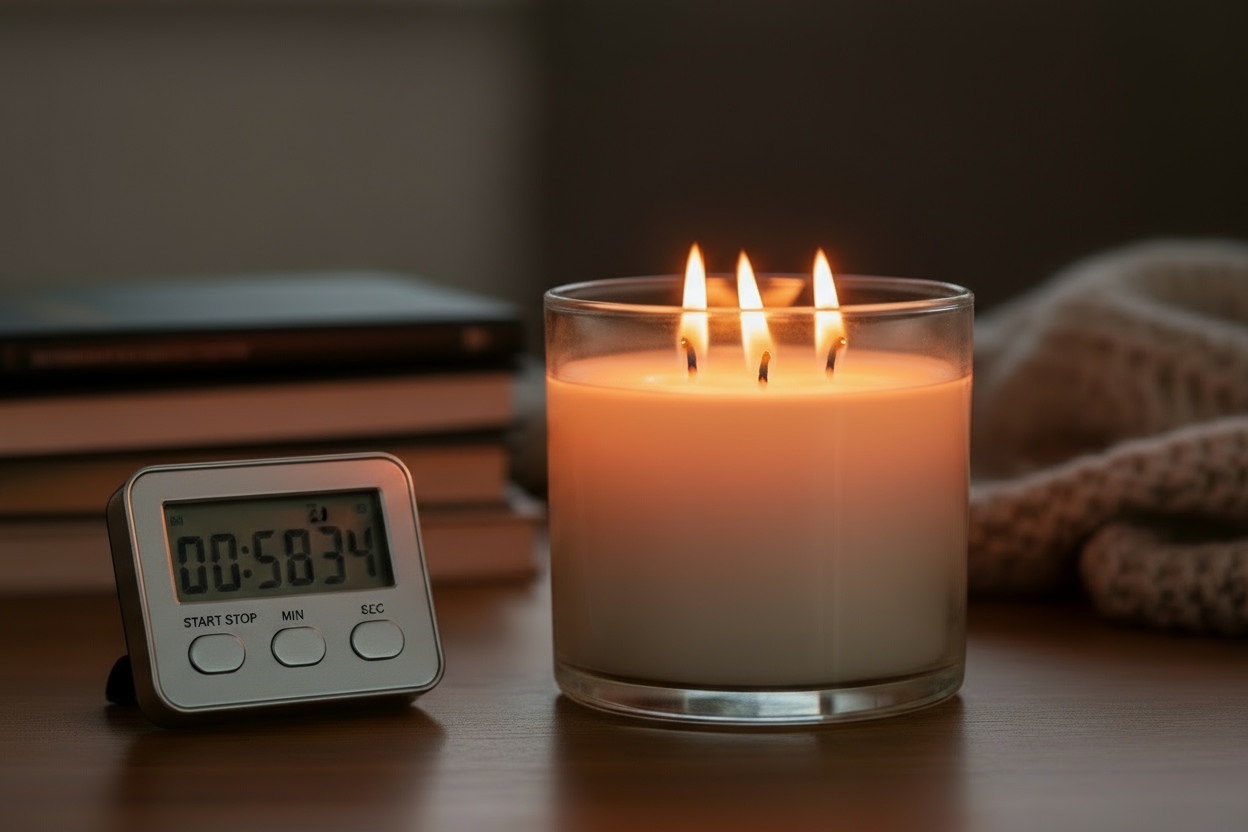
How Do I Calculate Burn Rate?
How to Determine a Candle's Burn Time: Accurate Methods and Tips
There are a couple of different ways to determine a candle's burn time (or burn rate). While either method can be used, we recommend using the first method for more accuracy in approximating a candle's burn rate.
Please Note: For both methods mentioned below on estimating a candle's burn time, we recommend slightly lowering the estimate to account for any remaining wax after the candle has extinguished itself.
Method 1: Full Burn Test
Overview: The Full Burn Test involves burning the candle in 2 - 3 hour intervals and keeping track of how many burns it takes for the candle to completely burn down until it extinguishes itself.
Steps:
-
Burn the candle in 2-hour intervals.
-
Track the number of burns until the candle fully extinguishes.
-
Multiply the number of burns by the burn duration to get the approximate burn time.
Example: If you burned a candle in 2-hour intervals and it took 25 burns to fully burn down, the candle would have an approximate burn time of 50 hours (25 burns * 2 hours each).
Tips for Accuracy:
-
Perform this test on at least two candles simultaneously to ensure consistent results.
-
Document the burn rate meticulously.
This method can be a more lengthy process, but it will provide a better estimate of a candle's burn rate, which is particularly useful for those selling candles.
Method 2: Partial Burn Test (Weight Method)
Overview: Another method for estimating a candle's burn time is by doing a partial burn test. This involves measuring the weight of the candle before and after a controlled burn period to calculate the burn time estimate.
Steps:
-
Weigh the candle before burning.
-
Burn the candle for approximately 2 - 3 hours (depending on the candle diameter).
-
Once the candle cools, weigh the candle again.
-
Determine the amount of wax used by subtracting the weight after burning from the beginning candle weight.
-
Estimate the total number of burns by dividing the total wax weight used in the candle by the amount of wax used from burning the candle.
-
Multiply the estimated total burns by the burn time hours to get the total burn time.
Example:
-
Total wax weight = 12 oz.
-
Beginning candle weight = 28 oz. (1 lb. and 12 oz.)
-
Burn candle for 2.5 hours.
-
Candle weight after burning = 27 oz. (1 lb. and 11 oz.)
-
Total wax used = 28 oz. - 27 oz. = 1 oz.
-
Estimated burns = 12 oz. / 1 oz. = 12 burns.
-
Estimated candle burn time = 12 burns * 2.5 hours = 30 hours.
Considerations:
-
This example assumes a test burn time for a container candle. For free-standing candles, the same steps apply, only you will not need to account for the container weight.
-
While the partial burn test is a quick way to estimate a candle's burn time, its accuracy can be affected by various factors, such as changes in burning characteristics as the candle burns down and the shape of the container.
Additional Tips for Accurate Candle Burn Time Estimation
Understanding Candle Burn Time Factors:
-
Wick Size: The size and type of wick can significantly affect burn time. Ensure you test different wicks to find the optimal one for your candle.
-
Wax Type: Different waxes burn at different rates. Soy, paraffin, and beeswax all have unique burning characteristics.
-
Fragrance Load: High fragrance loads can affect the burning behavior of the candle. Test various fragrance loads to find a balance that works.
Using a Candle Calculator: For those who want a quick estimate without performing tests, a candle calculator can be a useful tool. Input the wax weight, burn time per interval, and other relevant details to get an approximate burn time.
Key Takeaways for Candle Burn Time Estimation
Determining how long you can burn a candle accurately involves either a Full Burn Test or a Partial Burn Test (Weight Method). While the Full Burn Test is more accurate, the Partial Burn Test provides quicker results. Both methods help ensure you provide reliable burn time estimates for your candles, enhancing customer satisfaction and trust.
By following these guidelines and considering all factors, you can achieve more accurate burn time estimates and improve the overall quality of your candle products.
